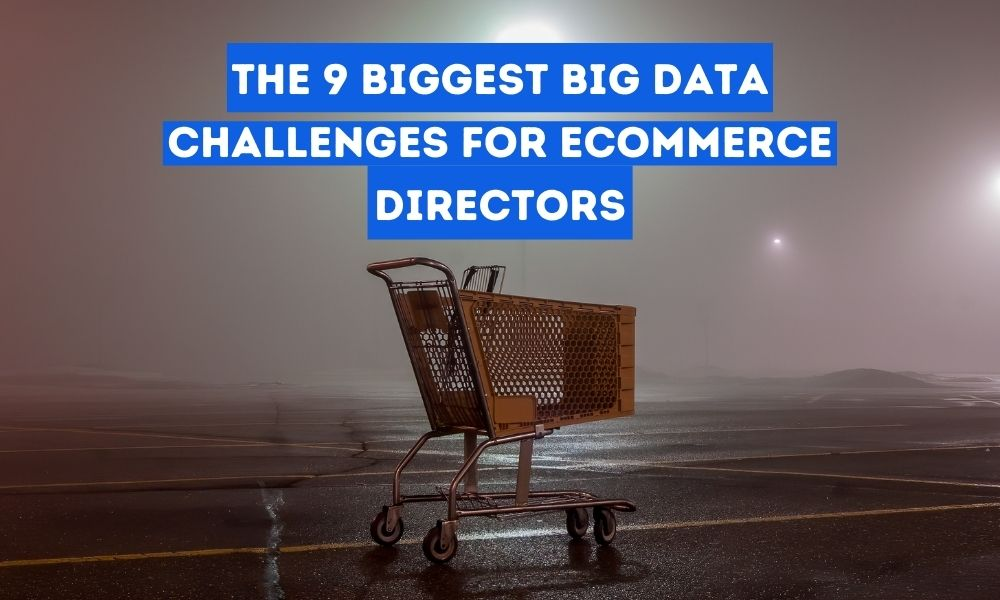
Running an online store is never easy. Here are the 9 biggest big data challenges facing ecommerce directors and how AI has the solution.
Share This Post
Share on facebookShare on linkedinShare on twitterShare on email
Subscribe To Weekly Millimetric Newsletter
Every effective ecommerce director knows that big data is critical to creating a great customer experience. Yet with big data comes big challenges.
Data-driven ecommerce teams are much more likely to turn a profit. They are a remarkable 23 times more likely to acquire customers than their non-data-driven peers. They are six times more likely to retain customers. And they are 19 times more likely to be profitable as a result. But, with so much data coming in and out of an online store, day in day out, it’s a big challenge to instil the actionable insights needed to drive digital success.

In this blog, we’ll explore the top 9 challenges facing ecommerce directors today, how they can use big data to solve them – and the simple solution for monitoring all data-driven ecommerce activities.
1. Shopping cart abandonment
Every year, a truly staggering $18bn worth of goods is left abandoned in carts as ecommerce brands experience an average cart abandonment rate of 69.57%. Those are some pretty sobering stats for an ecommerce director.
Therefore, it’s critical that online retailers use the data they hold on their shoppers to win back these lost carts. Teams need to analyse exactly where it is that they are losing customers during their journey and take proactive measures to address any problems they face on the way. Luckily, with the right level of checkout optimisation, experts predict online retailers can improve conversions by more than 35%.
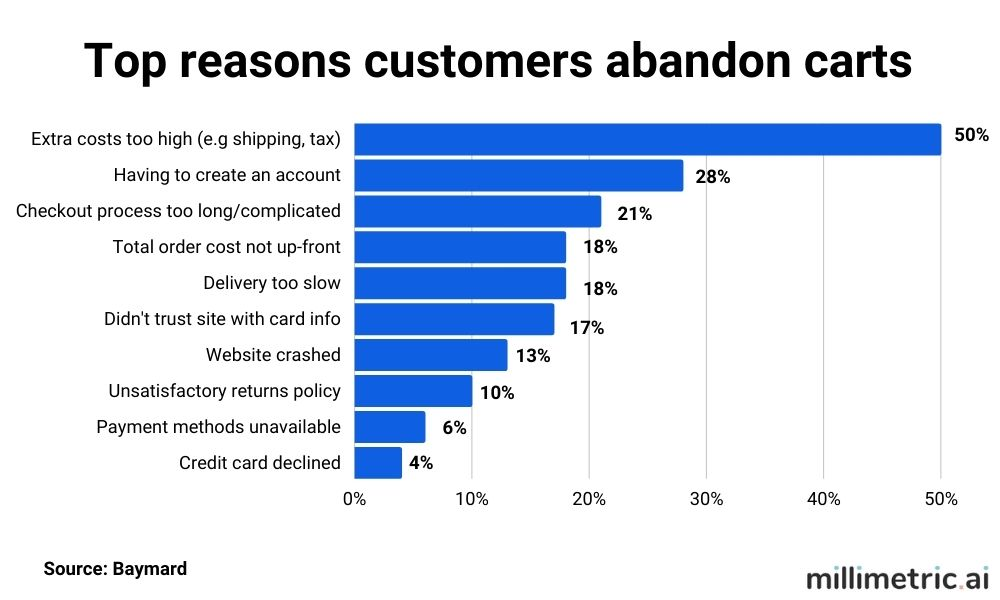
READ MORE: Tackling shopping cart abandonment with data analytics
2. Generating targeted traffic
For online retailers, generating targeted traffic is a growing challenge. At the beginning of the millennium, having a website was enough to drive traffic and conversions. Now that more than 547200 websites are created every day, the process is a lot more complicated.
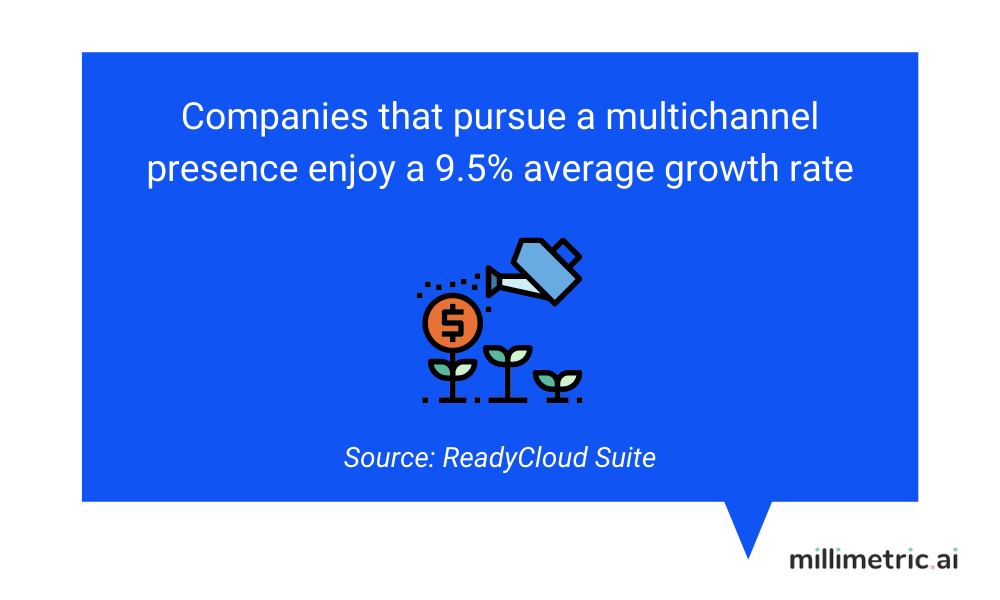
Ecommerce directors must use data-driven marketing approaches that target the specific customers they are trying to reach. And it’s no longer enough for an online retailer to rely on just one channel to drive traffic to their website. Today, effectively generating targeted traffic requires a combined effort of PPC, SEO, email, social, shopping engines, affiliates… we could go on. But, this data-driven, omnichannel approach means juggling multiple campaigns and monitoring huge amounts of data – more than any human is capable of. With employees trying to keep track of all this information, valuable insights often fall through the cracks.
One way to tackle this problem is to implement a system of automatic alerts. Google Analytics has some handy alerts that let teams know when numbers go above or below a certain threshold. However, our AI KPI tracking and anomaly detection tool, Millimetric, alerts you to unseen anomalies and digital performance opportunities in real time, making it the perfect platform for the fast-paced, real-time data-driven world of ecommerce.
READ MORE: How to find your ecommerce target audience with data
3. Reducing customer churn
You probably already know that attracting new customers is significantly more expensive that retaining the ones you’ve already got. In fact, it can cost almost five times more to attract new shoppers. And, according to research done by Frederick Reichheld of Bain & Company, increasing customer retention rates by just 5% increases profits by 25-95%. Moving the needle in regards to customer churn is therefore a key concern for ecommerce directors.
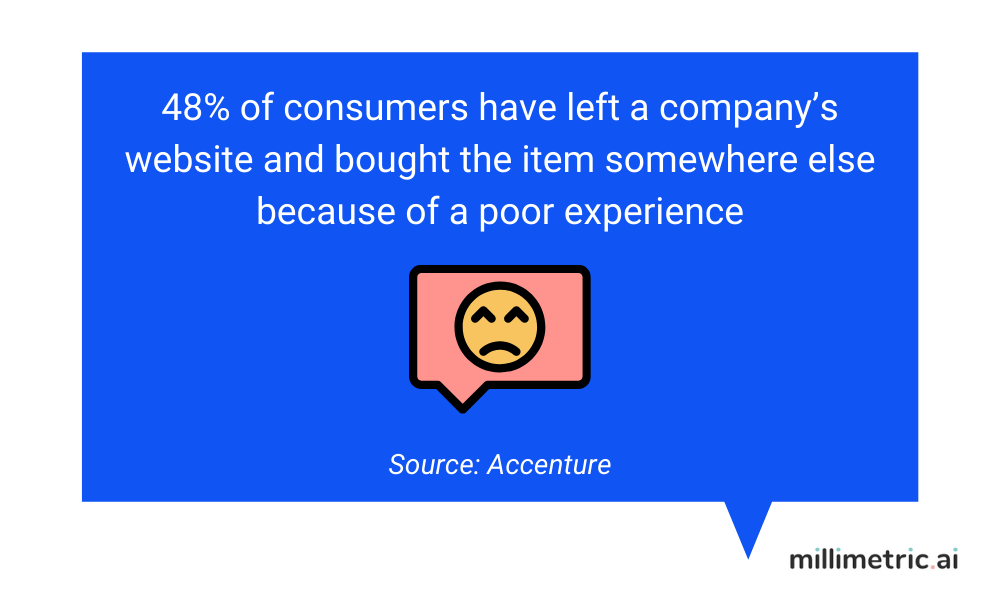
So, how does big data play into this? Well, in order to address customer churn, you need to understand your customers. To know your customers you need to understand your data, so you can see where they are coming from, the journeys they are making, their demographics and more. This information builds actionable insights which, in turn, can be developed into concrete plans to address customer churn.
4. Seasonality
Seasonality brings fluctuations in demand that can be a huge challenge for ecommerce directors. For many retailers, the period leading up to Black Friday, Christmas and New Year is their busiest, for example. For others, it’s the summer.
The busyness of certain periods of the year means that heads of ecommerce must be fully prepared for what’s to come. This means:
- Creating a data-driven strategy well ahead of time
- Backing up everything
- Optimising products
- Checking site speed and performance
- Optimising pricing and discounts
- Targeted marketing campaigns
READ MORE: A very COVID Christmas: Customer spend in Q4 2020
5. Capturing high-quality leads
Ecommerce directors today spend a significant amount of money attempting to drive traffic to their online store. With average ecommerce conversion rates hovering at about 2.86%, online retailers must put a lot of effort into generating leads in order to make the most of their marketing strategy.
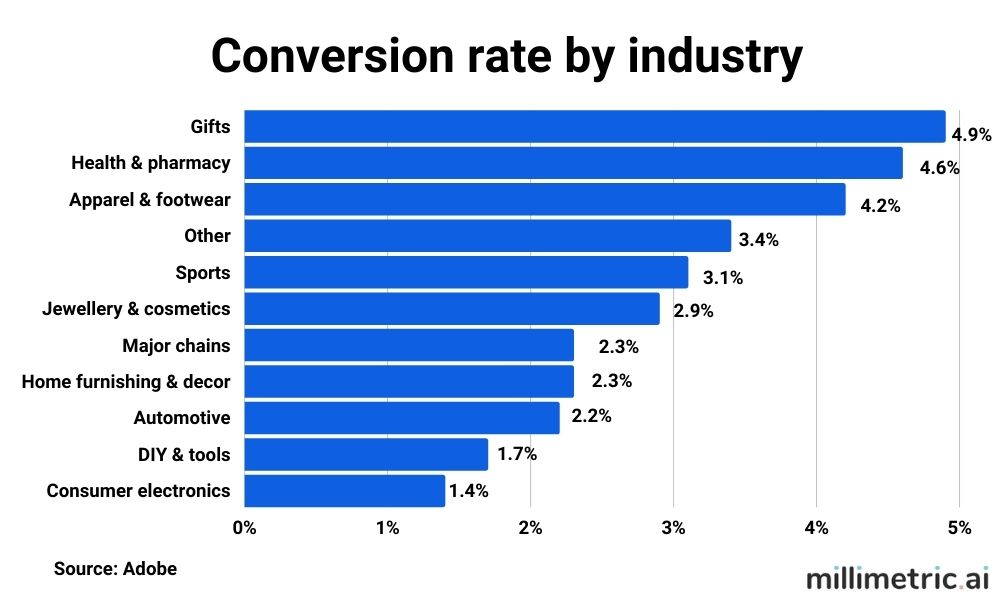
Capturing high-quality leads also requires a solid, data-driven approach. From crafting the right message for the right audience to finding the channels that drive the most leads, data is necessary to track results and drive intelligent strategies.
READ MORE: Nail your sales with these simple ecommerce lead gen tips
6. Identifying hidden anomalies
With so much data flowing through their online store, it can be difficult for ecommerce directors to see the hidden anomalies that threaten business success. Unless they’re (extremely regularly) taking a granular look at all their KPIs, anomalous data can fall through the cracks.
READ MORE: What is an anomaly?
These anomalies can vary in their impact, but not knowing about them can be devastating. And no online retailer is big enough to be safe from anomalies either. Not even Amazon, who in 2019 accidentally priced down a mop by 90% in their ‘deal of the day’, then disappointed buyers by abruptly cancelling their orders. No matter how great your ecommerce strategy is, and how well prepared you are, if you don’t know exactly what’s going on in your data, you always run the risk of errors toppling everything you’ve built. This is why BI tools that can identify unusual metrics can make-or-break an online retailer.

7. Choosing the right technology
Tools, such as automation and BI tools, are critical for helping an online retailer run smoothly. However, heads of ecommerce often face growth challenges when they invest in the wrong technology. Investing in the wrong tools can waste time, money and resources that online stores don’t have to spare.
Obviously, it’s up to each team to decide what tools they want to implement. (And we don’t want to make it more complicated by pushing our own product here…). But ecommerce directors need to be methodical in how they pick their ecommerce tools, choosing them based on whether they:
- Are flexible
- Are scalable
- Have fixed fees
- Are future-proof
- Offer reliable customer support
- Have the required integrations
- Have a backup plan and protects your data
(All of which our AI KPI tracking an anomaly detection tool, Millimetric, has, by the way!)
READ MORE: The dos and don’ts of picking new BI tools
8. Finding digital performance opportunities
Profit margins in ecommerce are notoriously tight. As a result, employees can spend spend hours each week searching through their data for ways to improve digital performance in order to enhance revenue.
The problem is that this kind of repetitive work isn’t what humans are built for, and we’re simply not very good at it. We get tired and miss things, or simply struggle to see patterns in huge swathes of data. This means that this kind of thorough analysis often gets missed – and revenue-enhancing opportunities with it.
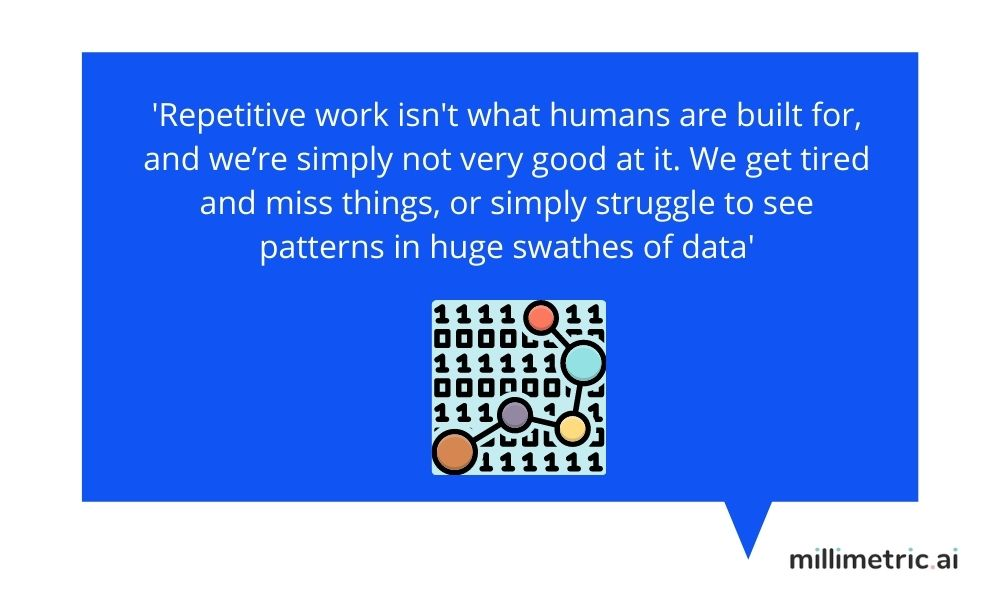
However, artificial intelligence (AI) BI tools can take this job off humans hands. Read more about how AI supercharges KPI tracking and data analysis.
9. Hiring data talent
Obviously, any head of ecommerce wanting to improve the data culture of a company is evetuslly going to want to hire data talent to help the efforts. However, hiring data and analytics talent is increasingly difficult as demand skyrockets. And, without the appropriate talent to drive data initiatives, corporate analytics is seriously limited.
There are a few ways that ecommerce directors can tackle this problem, including improving their hiring practices. But the easiest and cheapest way is to invest in effective BI tools that help them tackle some of the problems a data science team is commonly tasked with.
Overall takeaways
There are many ways that ecommerce directors can use data to solve their biggest problems. Yet the sheer mass of data that needs to be collected and analysed is gradually becoming the biggest problem of them all. Added to the fact that data talent is in short supply, there’s a widening gap between the problems heads of ecommerce need to solve, and their capacity to solve them.
So what’s the solution?
How AI solves even your biggest big data problems
Humans may struggle to analyse the huge amounts of data we handle every day, but AI is perfectly placed to take this problem off our hands. AI algorithms are able to comb through ecommerce data, 24/7, for any anomalies or digital performance opportunities in your campaigns, website, products and more. This means heads of ecommerce can get back to driving creative strategies, rather than wasting time getting lost in their data.
Helping ecommerce brands easily integrate AI into their data analytics is exactly why we created Millimetric. Our AI platform automates KPI analysis and anomaly detection, alerting the online retailer to unusual behaviour in their online store’s data in real time through real-time notifications. Once on the dashboard, the user is able to see exactly what happened in their data, the related metrics and drill down into the root cause analytics – whether it was a broken link, a product glitch, a pricing issue or any other unexpected issue that arises while dealing with a busy store.

Our tool’s features include:
- 24/ analysis of all your data by our cutting-edge machine learning algorithms
- All of your data in one dashboard, so you can easily see what’s going on and where
- Integrations with Google Ads, Facebook Ads, Shopify and more
- Instant anomaly alerts, empowering you to identify opportunities that increase conversions and revenue
- The power of a data analytics team, without the cost
- No code needed
- Expert customer support
And more!
Sign up for our free version today, try out our Growth package for free in-app, or contact us at hi@millimetric.com to learn more about our bespoke Enterprise offering.
Subscribe to receive our latest blogs